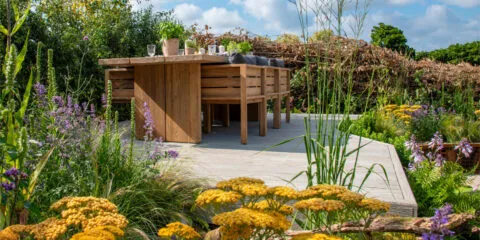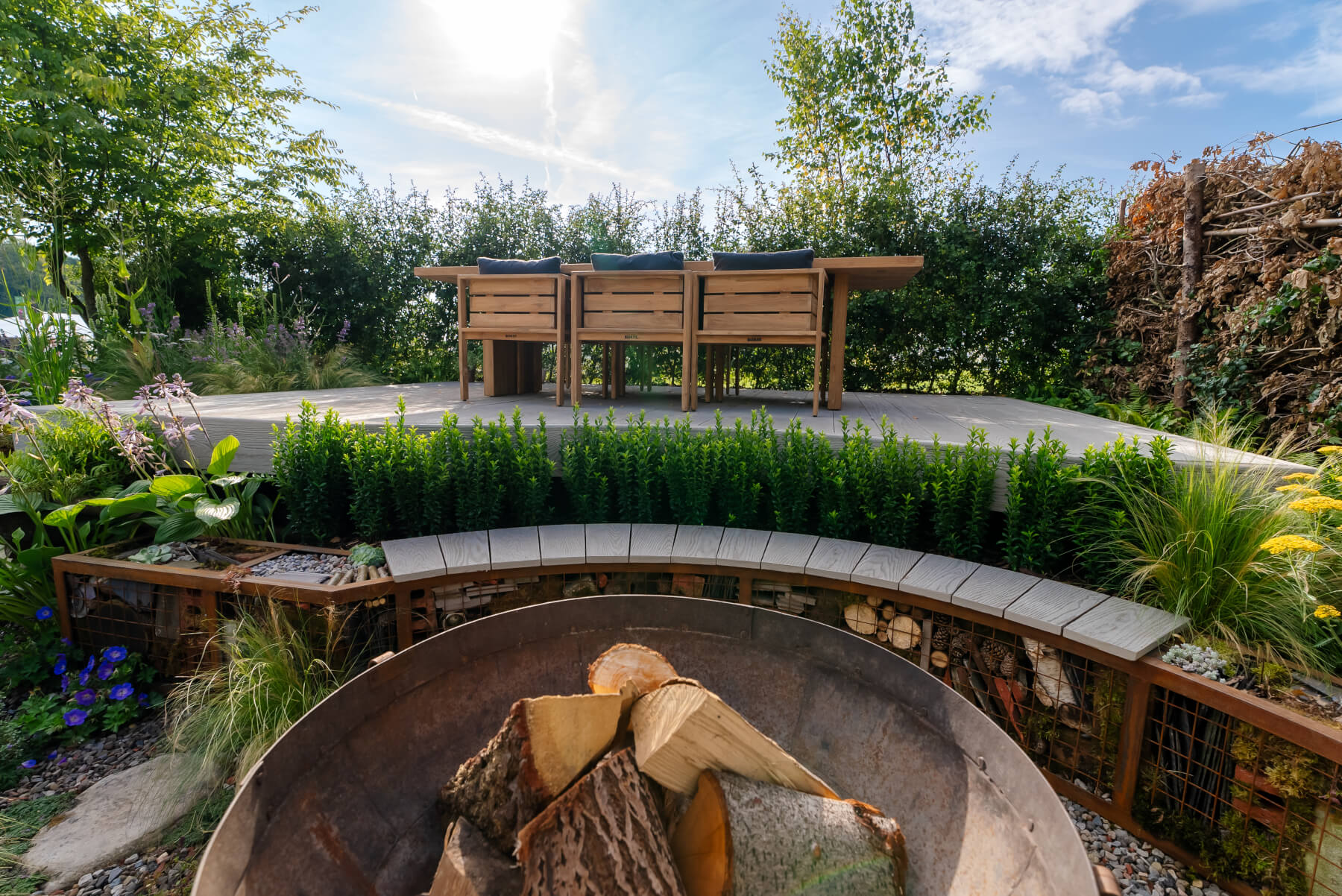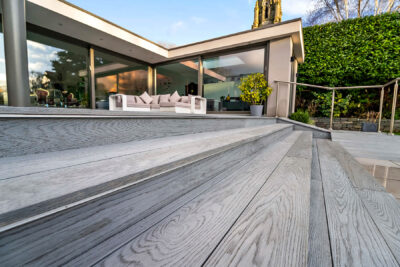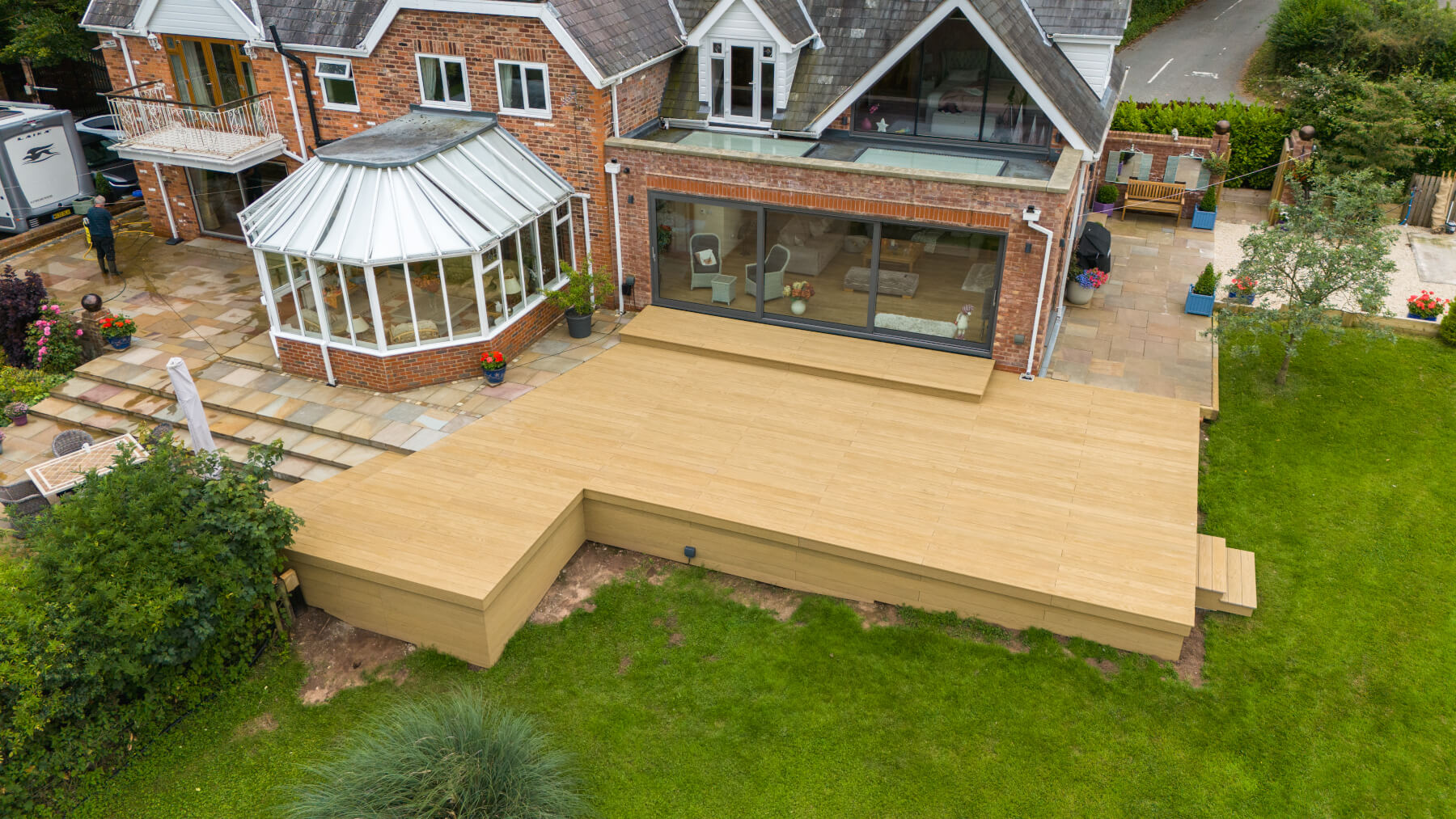Composite Decking
Composite Decking is known for its longevity, durability and quality, and provides an incredible value based on your investment.
From uncapped decking to capped decking, at Composite Prime, we provide our customers across the UK with a variety of quality decking options.
Decking is a great way to give your outdoor space a boost, providing the perfect place to position outdoor furniture, host barbecues or simply gather with loved ones on a sunny day.
A composite deck(s) offers a wide range of practical and aesthetic advantages. As well as bearing an unparalleled likeness to natural wood or timber, decking boards made from composite require very little maintenance, and are extremely durable and resistant to moisture – a big advantage in the UK!
Furthermore, you won’t need to worry about warping, cracking, splintering or rotting with plastic decking – all problems that can be commonplace with traditional timber options.
Our range of composite decking options include:
With hundreds of stockists and installers located across the country, no matter what product is most suitable for you, we can make it happen.
To find out more about our extensive composite decking options, contact our team today.
Inspiration
Get inspired to transform your outdoor space.

Like what you see?
Let us find the perfect solution for your outdoor space






